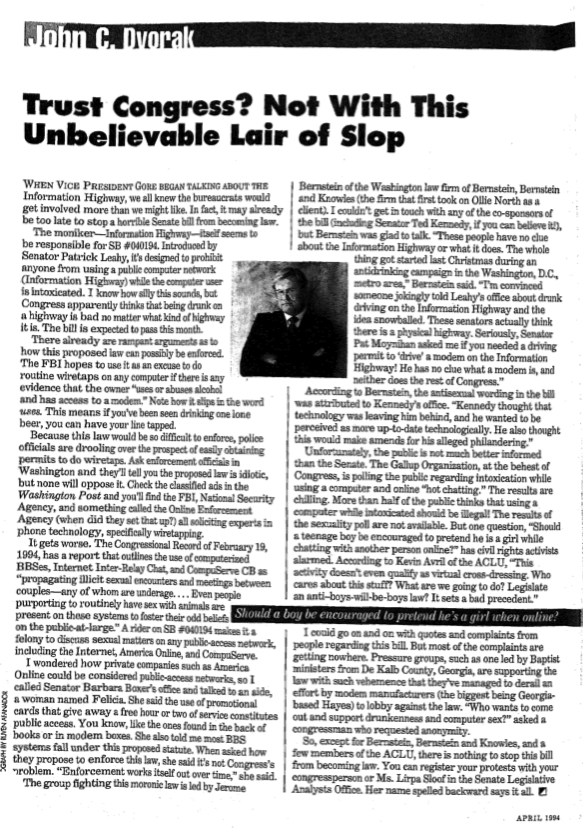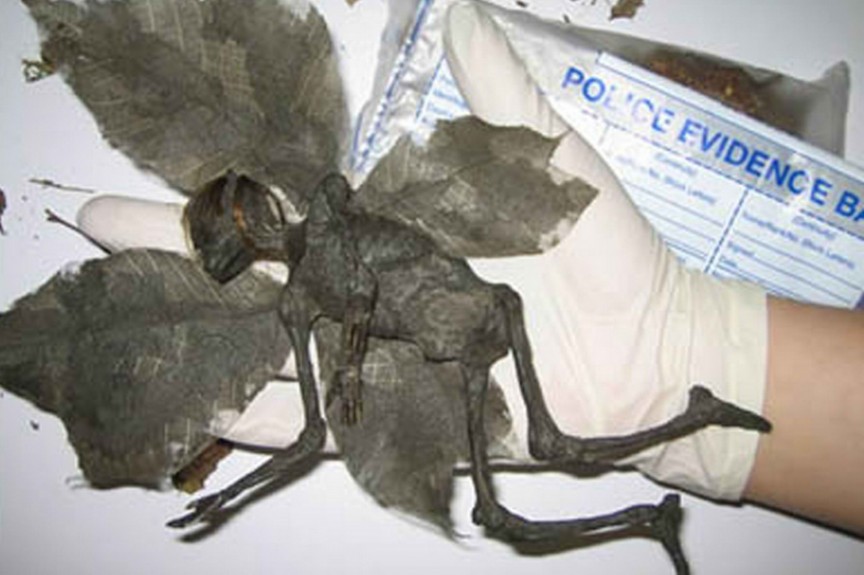10 Biggest Internet Hoaxes You Totally Believed [VIDEO]
May 28, 2014 02:57
The Internet is a great place to discover news from all over the world in a matter of minutes, but this also makes it a popular breeding ground for hoaxes.
Chain e-mail has been around a long time before social media platforms opened up to play even more believable hoaxes on Netizens. Until today, people are still getting fooled by Internet scams and hoaxes despite getting warned or alerted by officials.
Here are 10 of the Internet's highly successful hoaxes that fooled the world:
1. #BaldForBieber (2012)

On October 22, 2012, a screenshot made to appear like an official tweet from the Entertainment Tonight account instantly went viral. The post announced that Justin Bieber had been diagnosed with cancer and suggested that fans shave their heads in support, and attach the hashtag #BaldForBieber. A website, tribute videos, and Facebook pages further enhanced the rumor, unfortunately causing a few Bieber fans (most of them female) to actually shave their heads and tweet pictures of their bald heads with the hashtag. Luckily for the majority of Beliebers, the hoax was short-lived as a number of sources immediately reveals that some 4Chan trolls had started it.
2. The Last Tourist (2001)

Following the September 11, 2001 attack on the World Trade Center in New York, a picture began to make rounds on the internet. It was purportedly discovered in a camera found among the rubble. The image showed a man dressed for cold weather, standing on the observation deck of the World Trade Center wile a plane could be seen flying in his direction. The man was dubbed "The Last Tourist” as he was supposedly the last visitor photographed before the famous buildings were attacked.
But then Hoaxapedia exposed the photograph as a fraud by pointing out its inconsistencies, which include how the plane wasn't the same as the one that had crashed into the South tower, how it was coming from the wrong direction, and how the observation deck was closed at the time of the attack, among others.
A 25-year old Hungarian man named Péter Guzli later came forward as the man in the picture. He said that the photo was taken on November 28, 1997 and that he was edited the image to show a few friends. However, the picture, along with a story attached to it, quickly went viral.
3. The Ban on Drunk Internet Use (1994)

PC Computing magazine claimed that some members of the U.S. Congress filed Bill #040194 in April 1994 to make using the Internet while drunk or discussing sexual matters over a public network illegal. The bill number was a big enough clue, as it indicated the date of April Fools' Day in 1994. The contact person was also listed as Lirpa Sloof - April Fools spelled backwards. Alas, some readers didn't catch the hints and ended up clogging up the phone lines of Senator Edward Kennedy, who was rumored to be the sponsor of the bill.
4. The Derbyshire Fairy (2007)

Also an April Fools' Day prank, but this one cost someone who bought the hoax a total of £280 in an Internet auction. The stunt was carried out by Dan Baines, a 31-year-old illusion designer for a group of magicians from London. A couple of days before April Fools’ Day in 2007, Baines posted images on his website that supposedly documented the remains of a mummified fairy that was discovered by a dog walker in Derbyshire. The photos showed the corpse to have wings, skin, and teeth. Baines even bolstered his claim by stating that the remains had “been examined by anthropologists and forensic experts” who had confirmed the magical discovery as genuine. Surprisingly, fairy believers ate up the story and flooded Baines’s email with inquiries. They believed it so badly that even after Baines had revealed that it was in fact an April Fools’ Day hoax, several believers proceeded to accuse him of covering up the authenticity of the remains.
5. The Twerker on Fire (2013)
In Septemer 2013, after Miley Cyrus triggered a twerking trend at the VMAs, a video titled "Worst Twerk Fail EVER - Girl Catches FIRE!" surfaced on YouTube. The short clip showed a girl catching fire after her handstand twerk was interrupted by someone entering the room. That video immediately went viral, garnering 9 million views in less than a week. Everybody shared their opinions about the video, including prominent members of the press! But a week after the video was posted on YouTube, Jimmy Kimmel dropped the bomb on his show:
6. Free Money from Bill Gates (1997)

Free money? Sure! Bill Gates hoaxes have been popping up since 1997. The elements of the hoaxes vary, but the common claim is that the billionaire is willing to give away money to people who forward information about the scheme. Obviously, none of the schemes were actually approved by Bill Gates.
7. Human Fetus Soup in Asia (2001)

We're sure you've seen this one. In 2001, an email about restaurants in China serving human fetus soup was heavily circulated. The text varied across versions of the chain mail, but the pictures and narrative remained the same. One of the versions was:
8. An Onion as an iPod Charger (2007)
Food gives you energy, but it won't do the same for your phone. The guys at HouseholdHacker created a hoax video claiming that onions have iPod-charging abilities. That video garnered over 4 million views in its first week of being posted. Many reputable sites also reported the HouseHolder claim as fact.
But after some time, the video was exposed as a fraud. ABC's Emily Friedman tested the method and concluded that it was an "iFraud." MythBuster Grand Imahara, meanwhile, explained that the absence of anodes and cathodes in the onion made it obvious that the setup wouldn’t work.
9. lonelygirl15 (2006)
A video blog by 'lonelygirl15' was posted on June 16, 2006, on YouTube. She introduced herself as "Bree" in a minute-and-a-half clip which seemed ordinary - with typical content expected from a bored teenage girl with a YouTube vlog. But her story quickly morphed into a bizarre one that revealed her family's secret occult practices and the mysterious disappearance of her parents.
As expected, Bree’s MySpace page caught fire as it was through that platform which she was communicating with her followers. Also expectedly, rumors began floating around that the vlog was fictional, finally culminating in Richard Rushfield of the Los Angeles Times revealing that Creative Artists Agency was behind the videos. It was later exposed that the vlog’s main character was actually 19-year-old actress Jessica Rose. However, the YouTube channel continued to remain relatively popular until the series ended on August 1, 2008.
10. Bonsai Kittens (2000)

We're sure you know this one too. In late 2000, Cruel.com featured BonsaiKitten.com as its "Cruel Site of the Day”. The Bonsai Kitten site featured pictures of kittens in jars and instructions for creating bonsai kittens, supposedly a lost art whereby kittens were grown into various shapes depending on the constricting spaces that they were made to live in. Here's an example of what was written on the site:
[TheRichest]
Chain e-mail has been around a long time before social media platforms opened up to play even more believable hoaxes on Netizens. Until today, people are still getting fooled by Internet scams and hoaxes despite getting warned or alerted by officials.
Here are 10 of the Internet's highly successful hoaxes that fooled the world:
1. #BaldForBieber (2012)

On October 22, 2012, a screenshot made to appear like an official tweet from the Entertainment Tonight account instantly went viral. The post announced that Justin Bieber had been diagnosed with cancer and suggested that fans shave their heads in support, and attach the hashtag #BaldForBieber. A website, tribute videos, and Facebook pages further enhanced the rumor, unfortunately causing a few Bieber fans (most of them female) to actually shave their heads and tweet pictures of their bald heads with the hashtag. Luckily for the majority of Beliebers, the hoax was short-lived as a number of sources immediately reveals that some 4Chan trolls had started it.
2. The Last Tourist (2001)

Following the September 11, 2001 attack on the World Trade Center in New York, a picture began to make rounds on the internet. It was purportedly discovered in a camera found among the rubble. The image showed a man dressed for cold weather, standing on the observation deck of the World Trade Center wile a plane could be seen flying in his direction. The man was dubbed "The Last Tourist” as he was supposedly the last visitor photographed before the famous buildings were attacked.
But then Hoaxapedia exposed the photograph as a fraud by pointing out its inconsistencies, which include how the plane wasn't the same as the one that had crashed into the South tower, how it was coming from the wrong direction, and how the observation deck was closed at the time of the attack, among others.
A 25-year old Hungarian man named Péter Guzli later came forward as the man in the picture. He said that the photo was taken on November 28, 1997 and that he was edited the image to show a few friends. However, the picture, along with a story attached to it, quickly went viral.
3. The Ban on Drunk Internet Use (1994)

PC Computing magazine claimed that some members of the U.S. Congress filed Bill #040194 in April 1994 to make using the Internet while drunk or discussing sexual matters over a public network illegal. The bill number was a big enough clue, as it indicated the date of April Fools' Day in 1994. The contact person was also listed as Lirpa Sloof - April Fools spelled backwards. Alas, some readers didn't catch the hints and ended up clogging up the phone lines of Senator Edward Kennedy, who was rumored to be the sponsor of the bill.
4. The Derbyshire Fairy (2007)

Also an April Fools' Day prank, but this one cost someone who bought the hoax a total of £280 in an Internet auction. The stunt was carried out by Dan Baines, a 31-year-old illusion designer for a group of magicians from London. A couple of days before April Fools’ Day in 2007, Baines posted images on his website that supposedly documented the remains of a mummified fairy that was discovered by a dog walker in Derbyshire. The photos showed the corpse to have wings, skin, and teeth. Baines even bolstered his claim by stating that the remains had “been examined by anthropologists and forensic experts” who had confirmed the magical discovery as genuine. Surprisingly, fairy believers ate up the story and flooded Baines’s email with inquiries. They believed it so badly that even after Baines had revealed that it was in fact an April Fools’ Day hoax, several believers proceeded to accuse him of covering up the authenticity of the remains.
5. The Twerker on Fire (2013)
In Septemer 2013, after Miley Cyrus triggered a twerking trend at the VMAs, a video titled "Worst Twerk Fail EVER - Girl Catches FIRE!" surfaced on YouTube. The short clip showed a girl catching fire after her handstand twerk was interrupted by someone entering the room. That video immediately went viral, garnering 9 million views in less than a week. Everybody shared their opinions about the video, including prominent members of the press! But a week after the video was posted on YouTube, Jimmy Kimmel dropped the bomb on his show:
6. Free Money from Bill Gates (1997)

Free money? Sure! Bill Gates hoaxes have been popping up since 1997. The elements of the hoaxes vary, but the common claim is that the billionaire is willing to give away money to people who forward information about the scheme. Obviously, none of the schemes were actually approved by Bill Gates.
7. Human Fetus Soup in Asia (2001)

We're sure you've seen this one. In 2001, an email about restaurants in China serving human fetus soup was heavily circulated. The text varied across versions of the chain mail, but the pictures and narrative remained the same. One of the versions was:
Oh !! Oh !! How cruel can humans be???We don't know if eating human fetuses seriously exists or have ever existed anywhere in the world, but the pictures attached to the 2001 email are not proof of the practice. They were actually photographs taken by Chinese performance artist Zhu Yu, who staged the shocking conceptual piece, "Eating People," at a 2000 Shanghai arts festival. The "fetus" he ate was created by placing a doll's head on a duck's carcass.
Please finish your meal before open the files….
What u are going to witness here is a fact, don’t get scared !” It’s Taiwan’s hottest food…” In Taiwan, dead babies or fetuses could be bought at $50 to $70 from hospitals to meet the high demand for grilled and barbecued babies …
What a sad state of affairs!!
Please forward this msg to as many people as u can so it can be seen by the world and someone takes action on the same
8. An Onion as an iPod Charger (2007)
Food gives you energy, but it won't do the same for your phone. The guys at HouseholdHacker created a hoax video claiming that onions have iPod-charging abilities. That video garnered over 4 million views in its first week of being posted. Many reputable sites also reported the HouseHolder claim as fact.
But after some time, the video was exposed as a fraud. ABC's Emily Friedman tested the method and concluded that it was an "iFraud." MythBuster Grand Imahara, meanwhile, explained that the absence of anodes and cathodes in the onion made it obvious that the setup wouldn’t work.
9. lonelygirl15 (2006)
A video blog by 'lonelygirl15' was posted on June 16, 2006, on YouTube. She introduced herself as "Bree" in a minute-and-a-half clip which seemed ordinary - with typical content expected from a bored teenage girl with a YouTube vlog. But her story quickly morphed into a bizarre one that revealed her family's secret occult practices and the mysterious disappearance of her parents.
As expected, Bree’s MySpace page caught fire as it was through that platform which she was communicating with her followers. Also expectedly, rumors began floating around that the vlog was fictional, finally culminating in Richard Rushfield of the Los Angeles Times revealing that Creative Artists Agency was behind the videos. It was later exposed that the vlog’s main character was actually 19-year-old actress Jessica Rose. However, the YouTube channel continued to remain relatively popular until the series ended on August 1, 2008.
10. Bonsai Kittens (2000)

We're sure you know this one too. In late 2000, Cruel.com featured BonsaiKitten.com as its "Cruel Site of the Day”. The Bonsai Kitten site featured pictures of kittens in jars and instructions for creating bonsai kittens, supposedly a lost art whereby kittens were grown into various shapes depending on the constricting spaces that they were made to live in. Here's an example of what was written on the site:
At only a few weeks of age, a kitten’s bones have not yet hardened and become osseous. They are extremely soft and springy. In fact, if you take a week-old kitten and throw it to the floor, it will actually bounce!This obviously infuriated animal lovers, prompting several individuals and groups to begin petitioning and submitting the complaints to the Humane Society and the Animal Welfare Institute. The drama ended soon after, when the site was revealed to be nothing more than a satirical one created by an MIT university student who went by the alias “Dr. Michael Wong Chang”. But until this day, animals rights groups still protest the site’s continued existence as they say it promotes animal cruelty.
[TheRichest]







































































